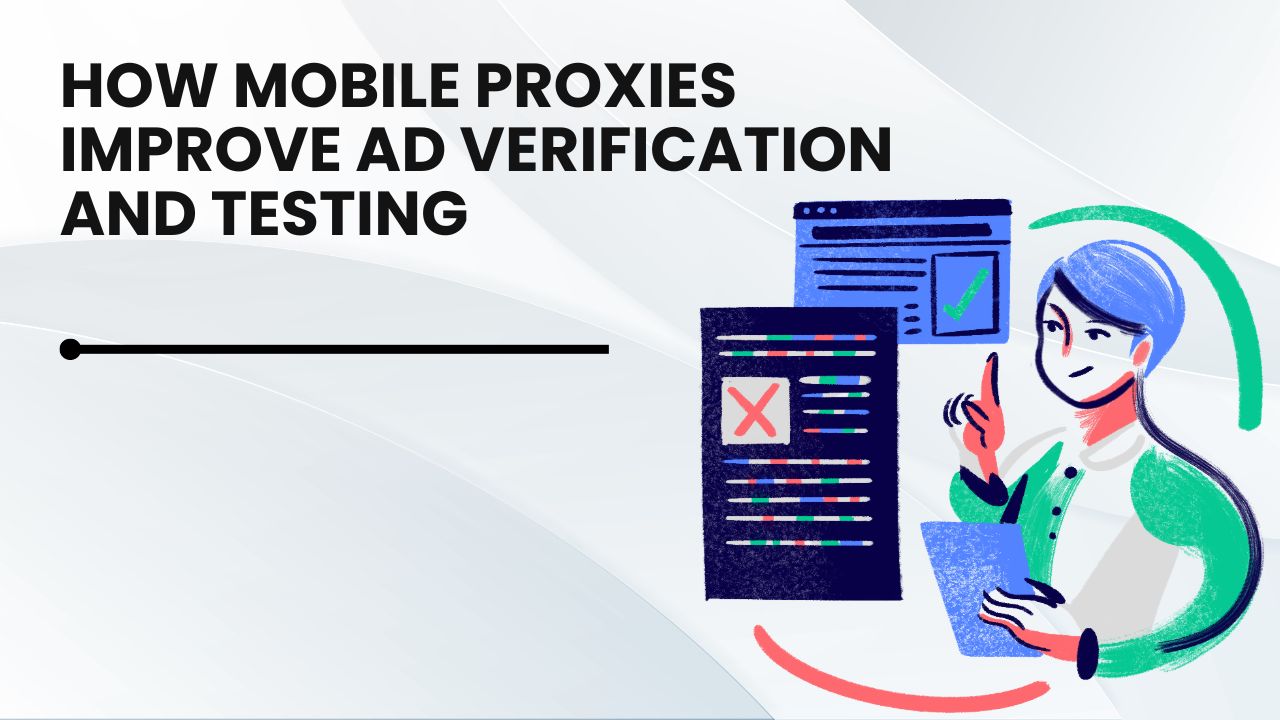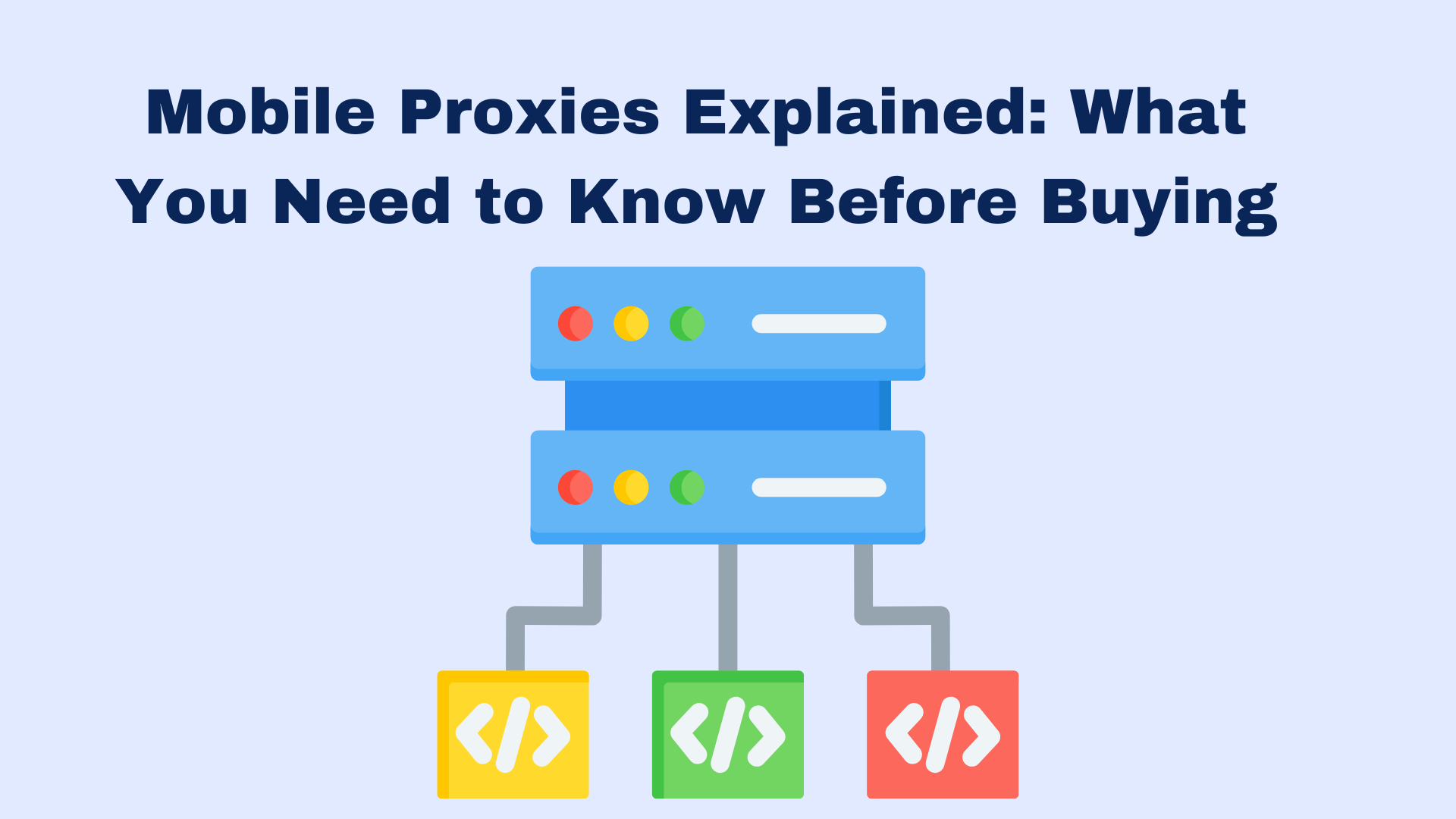In the digital advertising ecosystem, ensuring that ads are displayed correctly, reach their intended audience, and comply with brand safety guidelines is critical for advertisers and publishers. With the growing complexity of ad fraud, geo-restrictions, and network-based filtering, ad verification and testing have become essential practices to validate ad delivery and performance. Mobile proxies have emerged as a vital tool in this process, providing unique capabilities to advertisers, agencies, and verification platforms. This article explores how mobile proxies improve ad verification and testing, detailing their benefits, applications, and best practices for 2024.
What Are Mobile Proxies?
Mobile proxies use IP addresses assigned by mobile network operators (MNOs) to real mobile devices. Unlike data center proxies, which can be easily detected and blocked, mobile proxies leverage IPs from actual 3G, 4G, and 5G connections, making them appear as legitimate mobile user traffic. This distinction allows mobile proxies to bypass sophisticated detection systems, emulate real user behavior, and provide a realistic testing environment for ad verification.
Key Benefits of Mobile Proxies in Ad Verification and Testing
1. Accurate Geo-Targeting Verification
One of the primary benefits of mobile proxies in ad verification is their ability to simulate browsing from different geographic locations using real mobile IPs. Many ad campaigns are geo-targeted, meaning they are designed to reach audiences in specific countries, cities, or regions. Mobile proxies allow advertisers to verify that their ads are correctly displayed in these targeted locations without physically being there. This ensures that ads reach the intended audience and adhere to geo-targeting parameters.
- Example Use Case: An advertiser launching a campaign in Paris can use mobile proxies with IP addresses based in Paris to verify that their ads appear correctly to users in that city, rather than in another location.
2. Bypassing Geo-Restrictions and Network Filters
Websites and mobile apps often implement geo-restrictions or network-based filters that block or modify ad content based on the user’s location or network. Mobile proxies help advertisers overcome these restrictions by mimicking real user traffic from various locations and networks. This capability ensures that ads are displayed correctly and are accessible to the target audience, providing a comprehensive view of ad visibility and compliance across different environments.
- Example Use Case: A global e-commerce brand can use mobile proxies to test ad delivery in multiple countries, ensuring that ads are served correctly and comply with regional regulations and policies.
3. Detecting and Preventing Ad Fraud
Ad fraud, including click fraud, impression fraud, and domain spoofing, poses a significant threat to digital advertisers by skewing campaign performance metrics and wasting ad spend. Mobile proxies play a critical role in detecting and preventing ad fraud by simulating genuine user behavior across different mobile networks and IP addresses. By replicating real-world conditions, advertisers can identify suspicious patterns or discrepancies in metrics, helping to detect fraudulent activity and prevent budget loss.
- Example Use Case: A digital agency suspects click fraud on its client’s ads. By using mobile proxies to simulate real clicks from different locations, the agency can compare the resulting data with reported metrics to uncover discrepancies that indicate fraudulent clicks.
4. Comprehensive Testing Across Devices and Networks
To deliver a seamless user experience, it is crucial to ensure that ads render correctly across a wide range of devices (e.g., smartphones, tablets) and networks (e.g., 3G, 4G, 5G). Mobile proxies allow for comprehensive testing under real-world conditions, ensuring that ads appear as intended across different devices and network types. This thorough testing helps maintain consistent ad performance and user experience, regardless of device or network.
- Example Use Case: An ad agency is preparing a campaign and needs to test how the ads will display on different network speeds and device types. By leveraging mobile proxies, the agency can simulate various conditions to ensure optimal ad delivery and appearance.
5. Monitoring Competitor Ads and Strategies
Understanding competitor strategies is a key part of any effective advertising campaign. Mobile proxies enable advertisers to discreetly monitor competitors’ ads in various regions and on different devices, providing valuable insights without revealing their own IP addresses or location. This information can be used to refine ad strategies, adjust targeting, or uncover new opportunities in the market.
- Example Use Case: A company wants to monitor how a competitor’s ads appear in different regions, such as North America and Europe. By using mobile proxies, the company can view competitor ads in both regions without triggering detection or compromising their privacy.
6. Ensuring Ad Compliance and Brand Safety
Brand safety is a critical concern for advertisers, ensuring that their ads do not appear alongside inappropriate or harmful content. Mobile proxies help advertisers verify that their ads are displayed in safe environments by simulating real user visits to various websites and apps. This helps detect any instances of ads appearing in undesirable contexts, allowing advertisers to take corrective action to maintain brand integrity.
- Example Use Case: An advertiser wants to ensure that their ads do not appear next to controversial content on certain websites. Mobile proxies help them simulate real user experiences to check for brand safety violations, ensuring ads are served in appropriate contexts.
7. A/B Testing of Ad Creatives and Formats
A/B testing is a fundamental practice in digital advertising to determine which creative formats perform best in specific regions, devices, or network environments. Mobile proxies allow advertisers to test multiple ad creatives and formats across different geographies and devices by simulating real user traffic from varied locations. This enables accurate data collection and optimization of ad campaigns based on real-world performance.
- Example Use Case: An ad agency is running A/B tests for two different ad creatives in specific regions. Mobile proxies allow them to simulate user interactions with both versions, gathering reliable data to inform strategic decisions.
8. Real-Time Monitoring and Optimization
For digital advertising campaigns to succeed, continuous monitoring and optimization are essential. Mobile proxies enable real-time monitoring of ads across different locations and networks, providing instant insights into ad performance. This allows advertisers to quickly identify and resolve issues such as incorrect targeting, poor visibility, or low engagement rates, ensuring campaigns are continuously optimized for success.
- Example Use Case: An advertiser notices a sudden decline in ad performance in a specific market. Using mobile proxies, they can quickly verify ad delivery and engagement in that market, diagnose the issue, and implement changes to improve performance.
Choosing the Right Mobile Proxy Provider for Ad Verification and Testing
To maximize the effectiveness of ad verification and testing using mobile proxies, it is essential to choose a reliable proxy provider that offers the following features:
- Large and Diverse IP Pool: A vast and varied pool of mobile IPs from different locations and networks ensures comprehensive ad testing and verification.
- Advanced Geo-Targeting Capabilities: The ability to select IPs by country, city, or even carrier to accurately simulate user behavior and ad delivery.
- High Uptime and Reliability: Ensures uninterrupted testing and monitoring for consistent ad verification.
- Rotating IPs and Sticky Sessions: Provides flexibility for testing different ad formats, sessions, and targeting scenarios to optimize campaign performance.
- User-Friendly Dashboard and API Integration: Facilitates easy management of proxies and seamless integration with existing ad verification tools.



